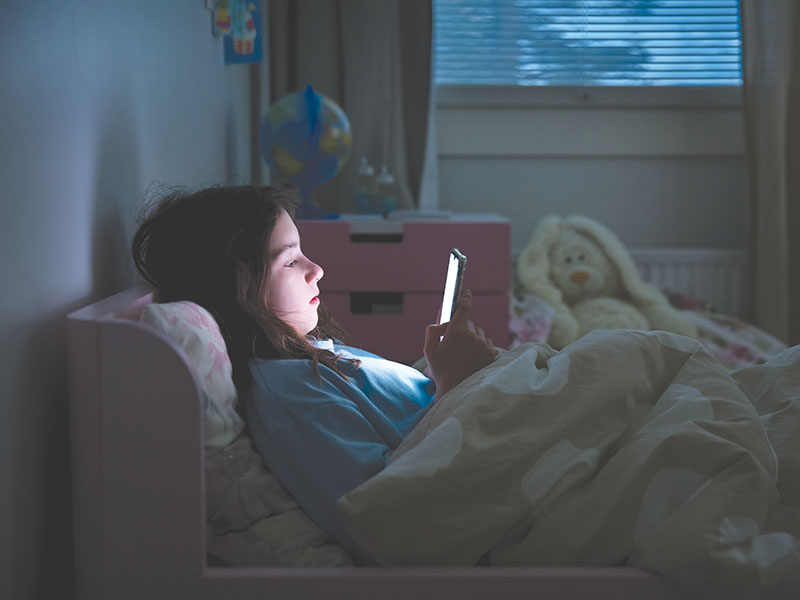
Joanne Orlando
How to know when your child is ready for ‘phone privacy’
Smartphone ownership among younger children is increasing rapidly. Most primary school children now own smartphones while they are the norm in high school.
Parents of younger children may occasionally (or routinely) look at their child’s phone to check it’s being used responsibly and safely.
But as children mature into teens, parental inspections may be resisted as invasion of privacy. Most parents would not ask for a high schooler’s diary. Latter day phones hold more personal information.
In the circumstances when do parents need to draw up “phone rules” for their children as they get older?
Early smartphone ownership
Parents get their younger children phones for many reasons. Some feel it will help keep kids safe when, for example, travelling on their own to and from school. Others have bought one after intense pressure from their child or worry their child will be left out socially if all their friends have a phone.
 Understand how AI is changing society
Understand how AI is changing society
In my own research with parents, some tell me they are reluctant to let their child use a parent’s phone for fear of risking important work files or information stored on it.
But most parents worry that giving a child a phone early might encourage phone addiction, or that a child might access adult content.
Parental guidance for this age group tends to focus on safety, which usually includes checking the child’s phone activity (with or without her knowledge), restricting access through passwords or time limits.
Inevitably parents want their children to be safe. Monitoring may be part of this, but it’s not the whole story. Most important is our role in equipping children to make good, independent and responsible decisions with their phone.
This means teaching children a broader set of skills about how to use phones safely and in a way that maximises potential for learning, connection and self-expression.
Education and open dialogue about phone safety should begin the day your child gets her phone and continue as she grows.
The focus should be on joint respectful problem-solving. This is what will empower children to self-regulate as they grow.
A phased approach: laying the groundwork early
In the first year of a younger child owning a phone, the focus should be on safety.
This may require controls, restrictions and monitoring, but not necessarily phone checking. Establishing rules for safety and wellbeing is key.
This means talking to your children about how and when to use the phone; not answering unknown texts and calls; not giving out personal information online, and about online kindness.
Let your children know they can always talk to you if they have a weird or bad experience online.
Parents should also focus on the bigger picture of safety and digital habits education. This necessitates:
- reviewing privacy and apps settings together
- understanding screen time features and how to use them
- learning how routines such as reaching for the phone as soon as you wake up can have a negative impact.
Search for quality apps together so that your child can enjoy and benefit from productivity apps, creative or problem solving games, music or science-based games. Or other apps that will help to develop their interests and life skills.
Trial and test apps or games together with your child to see how they work.
 Adapting as children mature
Adapting as children mature
As children mature, parental guidance also needs to change.
After about 12 months of a child’s phone ownership (give or take), checking phones needs to fade, and ongoing open communication needs to become paramount.
At this older stage, parents should have frequent, open discussions about online safety, respect and responsibility with their children. Ask your child questions about her phone experiences and always encourage her to ask for help in difficult situations.
Parents may also trial new ways of using the phone or explore certain apps with their child. For example, child and parent can use the screentime feature to discuss, and become aware of their developing phone habits. The discussion may also include learning to use the camera and its features well, or trying new apps (such as a creative drawing app) that allows exploration of a new interest.
Help your child work out which habits work for them and which ones cause stress. For example, if your child is on a WhatsApp group with friends and classmates, is that causing stress or worry? Talk to her about how she can handle it if she or a classmate are being talked about in the group chat.
The risk of routinely checking a teen’s phone is that it may generate mistrust between parent and child. Regular conversations about phone and online safety, and discussing news articles on the topic are ways of keeping safety front and centre. This helps promote good communication and trust.
Alleviating fear and worry
Adopting a phased approach helps your children develop the skills and values they need to be able to make good, independent decisions.
Some children may need more or less than 12 months in the stricter hands-on initial phase. Much depends on their maturity, the home environment and their social circle.
But taking a broader and adaptable approach is likely to help a parent better understand her child as a phone user.
This can help alleviate the fear and worry most parents entertain about phones and children.
(Joanne Orlando is researcher, digital literacy and digital wellbeing, Western Sydney University)
(This article is republished from The Conversation under a Creative Commons license)





















